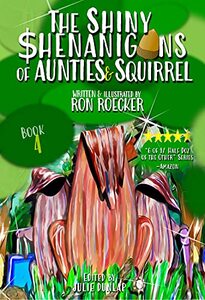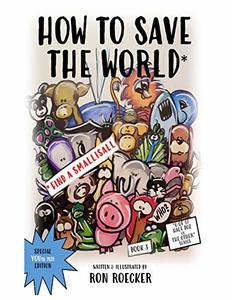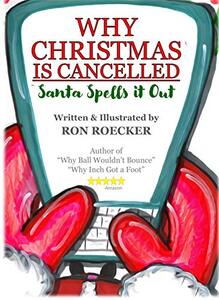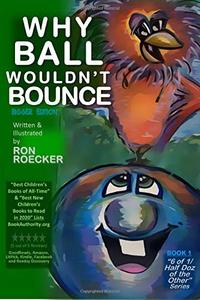Ron Roecker Interview Published on: 30, Mar 2021
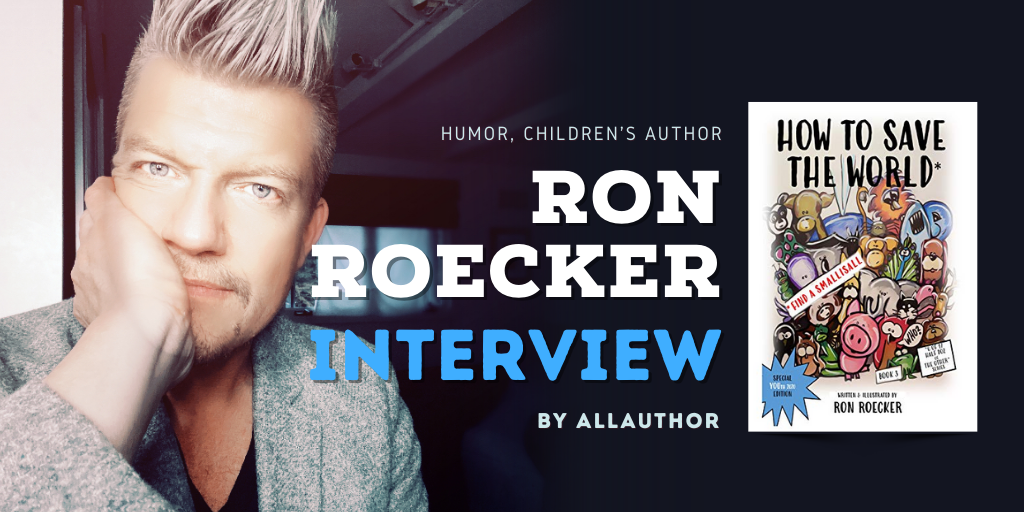 Tell us a little bit about your childhood and where you grew up.
Tell us a little bit about your childhood and where you grew up.
I was born in Kalamazoo, MI, but grew up in the thriving metropolis of Wichita, KS. It wasn’t until I moved to Los Angeles in 1996, that I finally felt like I was in the right place. I was really home. While growing up, it was my Grandma Mohney who was my creative hero. She used all types of art to express herself – music, painting, fashion, she even went through a latch-hooking phase (“Did you know I’m a hooker now?” she would ask the bank teller). It wasn’t about mastering one craft with her; it was about staying curious and finding new, interesting avenues through which to express oneself. Combine that with my Mom who wrote poetry and who was the Judge Judy of English grammar, and it was inevitable that I would one day write and illustrate children’s books.
Do you remember the first story you ever read and the impact it had on you?“Clifford the Big Red Dog” is the first book I remember reading (I’m sure it wasn’t my first but it was the one that first made an impact on me.) I loved Clifford because he wasn’t just a red dog, which would have been unique in and of itself; but he also was this gigantic, Air Force One-sized dog. AND he was red. Had it been “Clifford the Big Red Cat” or “Clifford the Big Red Gerbil,” it wouldn’t have been as relatable. It was that magical line between fact and fantasy that I was drawn to and that is a line I tow in most everything I write today. The other theme you will see a lot in my writing is not fitting in or feeling weirder than everyone else…weirder…bigger…redder.
How did your childhood influence your current attitude towards work ethic?My grandparents were in the restaurant business, and my sister and I were raised by a single mother. Working really hard was just something everyone did around me. I got my first job selling newspaper subscriptions when I was 13 and haven’t stopped working since. I am happiest when I am juggling a wide variety of multiple projects. But I also learned early on that “change” is a tricky thing for me: the days we had field trips, art, all-school tornado drills, guest speakers or show-and-tell were magical and filled me with tail-wagging excitement and anticipation. On the other hand, waking up early on a Saturday morning, having slept in my cleats and shin guards, to realize rain was going to steal my soccer thunder was heartbreaking (and it felt quite literally). As I got older, it became very clear to me that disappointment can be as paralyzing as monotony. So what I strive for when I write each book is: don’t disappoint the reader and don’t give them what they would expect.
Were you a big reader as a kid too? If so, what were some of your favorite books then?I certainly wasn’t a book worm. Because I had so many interests as a kid, I had no patience for books that didn’t grab my attention right from the start and keep me on my toes. “Mrs. Frisbee and the Rats of NIMH” is one of my all-time favorite books. It towed that amazing line between fact and fantasy while having this kick-ass, relatable heroine at its core. The most important aspect about this book is that it felt like it was written for the adult inside me. Because of the tone, its themes and its characters, it was this book that made me want to be a children’s book writer. Not surprisingly, I also liked the books where you could decide what happened next (“For the Winged Fox Adventure, turn to page 342…”).
What sparked the idea for your book, Why Ball Wouldn't Bounce?As a kid, I never understood why we used idioms and adages…”That’s just the way the ball bounces,” “Give an inch, take a mile,” “It’s a small world after all.” Why wouldn’t we just say what we meant instead of speaking in code? What if the ball didn’t bounce? So I started writing about this ball that wouldn’t bounce and, without explaining or justifying the idiom or adage, I gave it at least a reason to be…a context. One thing led to another and suddenly I had a series of books inspired by idioms and adages. So, of course, I had to call the series, “6 of 1/ Half a Doz of the Other.”
Do you prefer it when all the books in a series can be read as standalone? Or do you like to tie a connective thread through all the books?My books are all tied together with connective themes beyond just being inspired by idioms and adages: celebrating differences, discovering similarities, navigating life with an open heart and mind, being courageous and kind. Then each book addresses a specific theme(s): self-acceptance, friendship, family bonds, seeing the world in someone else’s shoes, never being too small or too old to add value or start making the world a better place.
Also, after the first book, each of the subsequent books features a cameo appearance by the previous books’ characters. There are a few Easter eggs throughout the books that pay homage to the other books and characters as well.
How would you feel if you were a ball and couldn't bounce?I would hope someone were brave enough to ask me, “Is it that you can’t bounce or won’t bounce?” Then stick around and be my friend regardless of the answer.
What did you learn about the publishing industry while publishing the novel, “Why Christmas Is Cancelled: Santa Spells it Out?”Oh, wow. This is such a loaded question. My answer would be “not nearly enough.” However, that was the first book to actually get picked up by a national retailer (Barnes & Noble) and was available online, which was thrilling for me. “It’s not enough just to have a great book” is the understatement of the literary world …
What, in your opinion, are the most important elements of good writing?1) An unwavering commitment to writing better than what has become acceptable as far as grammar, punctuation, AP style, etc.
2) Zero typos (and I can’t believe that isn’t just the norm anymore)
3) The ability to describe the intangible
4) No matter what you are writing, make it an adventure for the reader.
Do your book ideas usually start with the characters, story/plot, historical events, or something else?The first two books, “Why Ball Wouldn’t Bounce” and “Give an Inch a Foot” started with the idioms. The third book, “How to Save the World: Find a Smallisall” was written for the United Nations YOUNGA Youth Empowerment International Summit so that started with the idea that you are never too young or small to start changing the world. I was about ¾ of the way done with the book when “It’s a small world” popped into my head (thank you, Universe!).
What is the best thing about being an award-winning writer?When a reader discovers something in the story that you wanted a reader to discover, and when a reader discovers something in the story that you hadn’t thought about yourself.
Criticism, whether constructive or otherwise is part and parcel of any art form. How do you deal with reviews of your books- both positive and negative?I am so grateful for any feedback whether I give it weight or not. I market the hell out of every single good review I get but I don’t take it to heart. Negative feedback you read once and don’t take it to heart (unless it’s someone you respect a lot then you evaluate the heck out of it). Otherwise, I never comment on good or negative reviews.
How many plot ideas are just waiting to be written? Can you tell us about one? How much time do you have?I want to write a book on words and how far we’ve fallen when it comes to using, abusing, misusing and underutilizing them.
How has your experience of being associated with AllAuthor been?It’s been a wonderful experience. I feel part of the community unlike all the other options who say they create that as well. I also get manageable information and appreciate that I’m not bombarded with emails. The things AllAuthor offers are relevant and useful.
Share Ron Roecker's interview
Born in Kalamazoo, MI, Ron Roecker grew up in the thriving metropolis of Wichita, KS. While growing up, it was his Grandma Mohney who was his creative hero. His books are all tied together with each book addressing a specific theme. “Mrs. Frisbee and the Rats of NIMH” is one of his all-time favorite books. Award-winning writer and artist, Ron has earned 5 out of 5-star reviews for his writing from all around the world.

